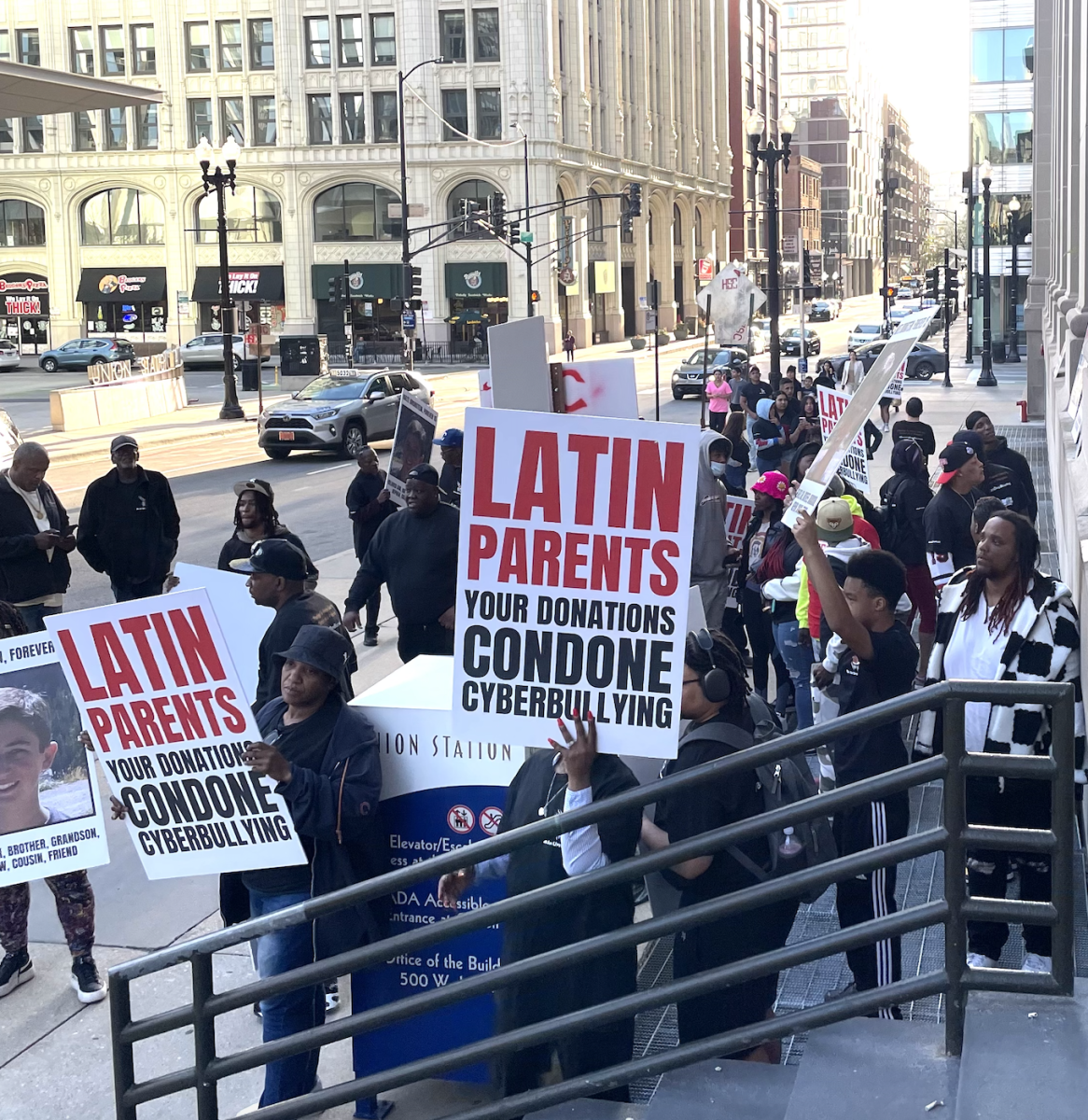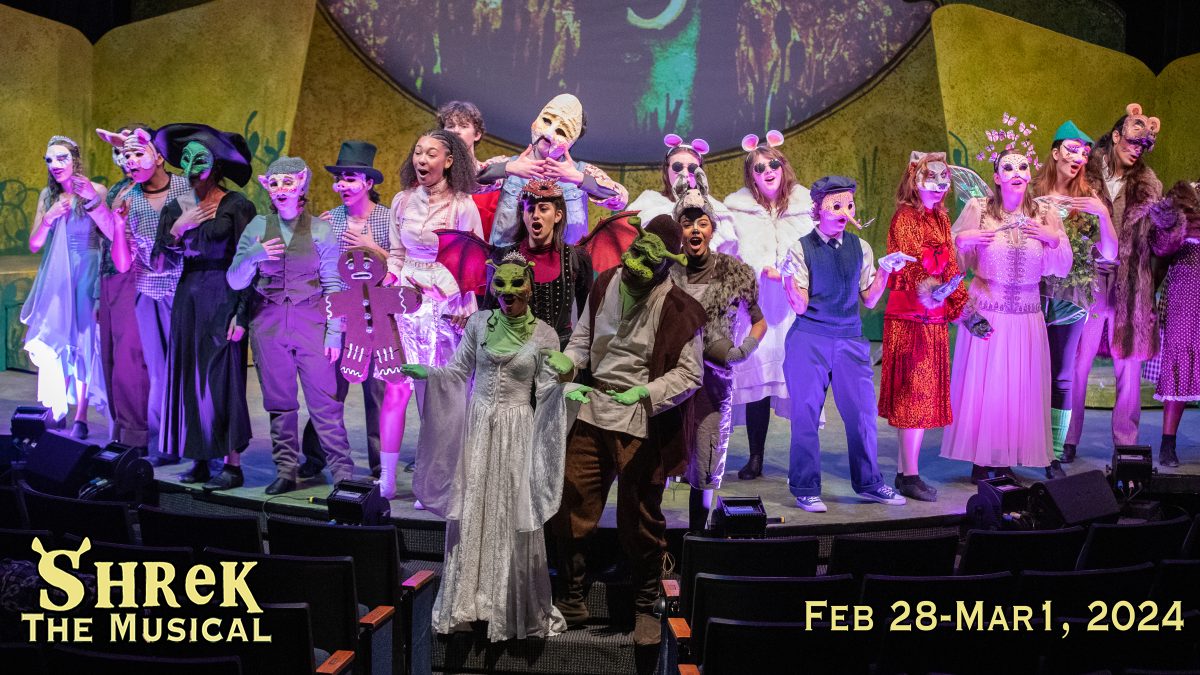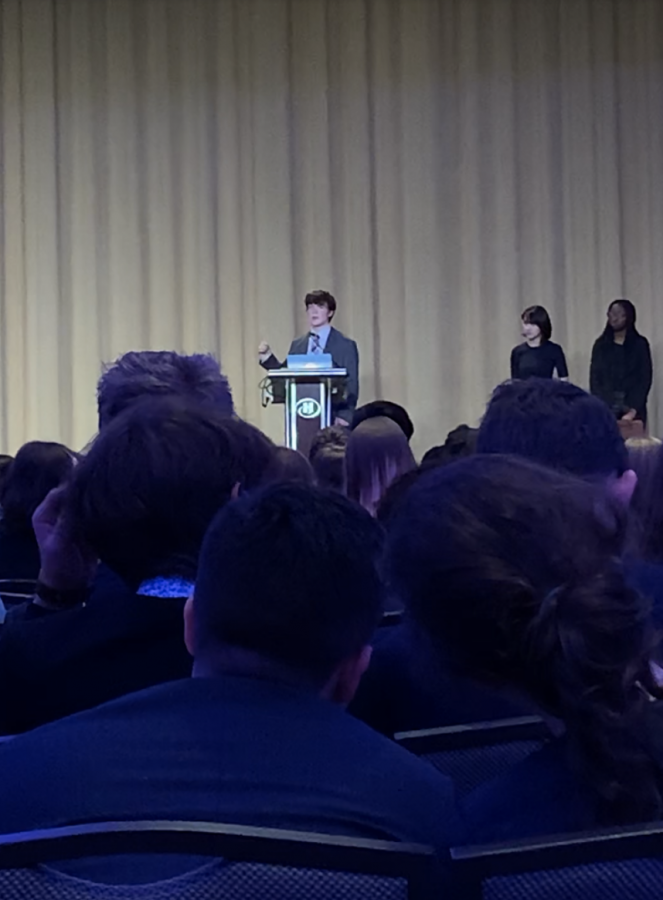By Chris Maurice Managing Editor We all know how fortunate we are to attend Latin. And we have all been in that awkward position when a relative, friend, or a complete stranger asks us how much is your school’s tuition? The look on their face after our response is never settling. Our parents are making a serious investment into our education. Our futures. But soon that investment into their child’s education may be too much for some families to make. There is much talk about the rising cost of college tuition, which is increasing at a much greater rate than inflation. Students drowning in enormous amounts of debt are completely trapped. Students across the country began talking about the problem, politicians are working to find a solution, so I set off to discover the truth about why college tuition is rising at such a rapid pace. That is what this article originally started off as being: an article about the rising cost of college all students at Latin are eventually going to have to pay and struggle with. But what I soon realized shocked me: Latin’s tuition has been rising at a rate that matches, if not exceeds, the percent change most colleges have raised their tuition. Latin’s current tuition is $31,735, and in 2015 tuition and fees made up $33,535,891, or 78%, of the school’s revenue. Operating expenses at Latin include instruction and instructional support (41%), student services and activities (12%), facilities, capital expenses, and debt service (17%), management and general expenses (14%), financial aid (8%), and towards auxiliary cost (8%). The data collected shows Latin’s tuition from 1983 to today, and each year it has been rising, a common practice for schools; however, the rate at which it was raising became shocking. In 1983 tuition at Latin was $5,655.00. When adjusted for inflation, tuition in 1983 would equal about $13,500 in 2015, which means the cost per day was roughly $88 a day, 57% lower than the current cost per day of $208. The reason for this increase in cost is the overall improvement in the education students are receiving: there are more students, which means more faculty, who are being paid much more than in 1983, and more activities for students to take part in. It is easy to see tuition in a macro sense, 31 thousand dollars a year, but if you break down the cost of attending Latin on a day-to-day basis, $208 a day, it can change the way you view the education you are receiving. With the help of Lauren Salzman, I collected the historical data of Latin’s tuition and found the percent change year to year. Here is what we found:
| Historic Data | ||
| Year | Tuition | % Increase |
| 1983 | $5,655.00 | |
| 1984 | $6,025.00 | 6.54% |
| 1985 | $6,380.00 | 5.89% |
| 1986 | $6,825.00 | 6.97% |
| 1987 | $7,440.00 | 9.01% |
| 1988 | $8,185.00 | 10.01% |
| 1989 | $8,840.00 | 8.00% |
| 1990 | $9,100.00 | 2.94% |
| 1991 | $9,600.00 | 5.49% |
| 1992 | $10,252.00 | 6.79% |
| 1993 | $10,900.00 | 6.32% |
| 1994 | $11,500.00 | 5.50% |
| 1995 | $12,075.00 | 5.00% |
| 1996 | $12,680.00 | 5.01% |
| 1997 | $13,280.00 | 4.73% |
| 1998 | $13,910.00 | 4.74% |
| 1999 | $14,640.00 | 5.25% |
| 2000 | $15,410.00 | 5.26% |
| 2001 | $16,300.00 | 5.78% |
| 2002 | $17,400.00 | 6.75% |
| 2003 | $18,400.00 | 5.75% |
| 2004 | $19,550.00 | 6.25% |
| 2005 | $20,675.00 | 5.75% |
| 2006 | $21,915.00 | 6.00% |
| 2007 | $23,285.00 | 6.25% |
| 2008 | $24,625.00 | 5.75% |
| 2009 | $25,845.00 | 4.95% |
| 2010 | $26,985.00 | 4.41% |
| 2011 | $27,985.00 | 3.71% |
| 2012 | $28,985.00 | 3.57% |
| 2013 | $29,985.00 | 3.45% |
| 2014 | $30,885.00 | 3.00% |
| 2015 | $31,735.00 | 2.75% |
 There was only one year, 1990, when the growth rate of tuition was lower than the CPI. In all other years, Latin’s tuition has grown quicker than the growth of the US economy.
I talked with Mr. Alexander, the Chief Financial Officer of Latin, about this data. The first thing he pointed out was how tuition over the past 10 years has been increasing at a decreasing rate. There are projects in the works in order to slow the growth of tuition; one of those projects is Latin’s goal of raising 50 million dollars towards its endowment. The Annual Report states that “donations to the general endowment fund benefit every Latin student. Endowment gifts help Latin fund vital areas such as scholarships and faculty salaries and play a crucial role in securing the school’s financial future.” Mr. Alexander said that the increase in endowment is already helping. Four years ago endowment made up 2% of the school’s income. If we get it to 10%, the school would have plenty of room to embark on new ventures. “Endowment can keep the growth of tuition at a low, allow for higher faculty salaries, and better facilitates.” Whatever the needs of the school are at the time, the endowment fund will allow for the school to do what it needs to do to accomplish those goals without raising tuition.
The main causation of the rise of tuition is the rising cost of paying teachers. Mr. Alexander brought to my attention a book, which held data collected from 15 other schools, that are similar in size, location, enrollment**, ACT scores, AP test scores, and faculty salaries, among other data. Mr. Alexander explained how it is Latin’s goal to remain in the top quartile of these 15 schools for paying faculty. Several years ago we had fallen behind in the ranks, but in recent years we have risen into the top quartile. “We want to keep it there because that is how we attract good faculty. Four years ago we gave a 10% increase to faculty in order to catch up to the schools and remain in the top quartile. Let’s say in the next few years we fall down in the ranks, it will take a bigger increase in tuition to get back up into the first quartile.” Paying faculty makes up Latin’s largest operating expense; however, this year, salaries were increased around 3% while the tuition increase was 2.75%
________________________________________________________________________
One question I had when starting to write this article about tuition at Latin was How much would it cost a child born this year to attend high school at Latin? Even though Latin’s tuition growth is slowing, the historical data Lauren and I collected showed otherwise. Over the course of 32 years, the average percent increase in tuition was 5.55%. Taking this percent increase we calculated the tuition for the future—all the way until the class of 2034, the year a child born this year would graduate high school.
Projected Data using 5.5% Projected using 2.75%
There was only one year, 1990, when the growth rate of tuition was lower than the CPI. In all other years, Latin’s tuition has grown quicker than the growth of the US economy.
I talked with Mr. Alexander, the Chief Financial Officer of Latin, about this data. The first thing he pointed out was how tuition over the past 10 years has been increasing at a decreasing rate. There are projects in the works in order to slow the growth of tuition; one of those projects is Latin’s goal of raising 50 million dollars towards its endowment. The Annual Report states that “donations to the general endowment fund benefit every Latin student. Endowment gifts help Latin fund vital areas such as scholarships and faculty salaries and play a crucial role in securing the school’s financial future.” Mr. Alexander said that the increase in endowment is already helping. Four years ago endowment made up 2% of the school’s income. If we get it to 10%, the school would have plenty of room to embark on new ventures. “Endowment can keep the growth of tuition at a low, allow for higher faculty salaries, and better facilitates.” Whatever the needs of the school are at the time, the endowment fund will allow for the school to do what it needs to do to accomplish those goals without raising tuition.
The main causation of the rise of tuition is the rising cost of paying teachers. Mr. Alexander brought to my attention a book, which held data collected from 15 other schools, that are similar in size, location, enrollment**, ACT scores, AP test scores, and faculty salaries, among other data. Mr. Alexander explained how it is Latin’s goal to remain in the top quartile of these 15 schools for paying faculty. Several years ago we had fallen behind in the ranks, but in recent years we have risen into the top quartile. “We want to keep it there because that is how we attract good faculty. Four years ago we gave a 10% increase to faculty in order to catch up to the schools and remain in the top quartile. Let’s say in the next few years we fall down in the ranks, it will take a bigger increase in tuition to get back up into the first quartile.” Paying faculty makes up Latin’s largest operating expense; however, this year, salaries were increased around 3% while the tuition increase was 2.75%
________________________________________________________________________
One question I had when starting to write this article about tuition at Latin was How much would it cost a child born this year to attend high school at Latin? Even though Latin’s tuition growth is slowing, the historical data Lauren and I collected showed otherwise. Over the course of 32 years, the average percent increase in tuition was 5.55%. Taking this percent increase we calculated the tuition for the future—all the way until the class of 2034, the year a child born this year would graduate high school.
Projected Data using 5.5% Projected using 2.75%
| Projected Tuition | Year | Projected Tuition | ||||
| $33,496.40 | 0 years old | 2016-2017 | $32,607.71 | |||
| $35,355.56 | 1 year old | 2017-2018 | $33,504.42 | |||
| $37,317.91 | 2 years old | 2018-2019 | $34,409.04 | |||
| $39,389.18 | 3 years old | 2019-2020 | $35,355.29 | |||
| $41,575.41 | JK | 2020-2021 | $36,327.56 | |||
| $43,882.98 | SK | 2021-2022 | $37,326.57 | |||
| $46,318.63 | 1st grade | 2022-2023 | $38,353.05 | |||
| $48,889.47 | 2nd grade | 2023-2024 | $39,407.76 | |||
| $51,602.99 | 3rd grade | 2024-2025 | $40,491.47 | |||
| $54,467.13 | 4th grade | 2025-2026 | $41,604.99 | |||
| $57,490.24 | 5th grade | 2026-2027 | $42,749.13 | |||
| $60,681.13 | 6th grade | 2027-2028 | $43,924.73 | |||
| $64,049.14 | 7th grade | 2028-2029 | $45,132.66 | |||
| $67,604.08 | 8th grade | 2029-2030 | $46,373.81 | |||
| $71,356.33 | Freshman year | 2030-2031 | $47,649.09 | |||
| $75,316.84 | Sophomore Year | 2031-2032 | $48,959.44 | |||
| $79,497.17 | Junior Year | 2032-2033 | $50,305.82 | |||
| $83,909.53 | Senior Year | 2033-2034 | $51,689.23 | |||












































tcronister • Dec 15, 2015 at 10:44 am
Great article, Chris… really impressive work and writing! Oh, if tuition was only $13.500 this year!? Yes, the endowment is huge, as is the possibility of having occasional yearly tuition increases of 0%. What great PR that would be!
tkendrick • Dec 6, 2015 at 1:48 pm
Well written Chris! Very cool. I’d say it’s safe to assume the 5.5% projection – someone has to pay for my Rogaine!
zmcarthur • Dec 3, 2015 at 1:42 pm
Chris – what will Latin look like in 20 years if tuition keeps outpacing inflation/GDP growth? Who will be able to attend this school? One hint – probably not teachers’ kids…
ZM